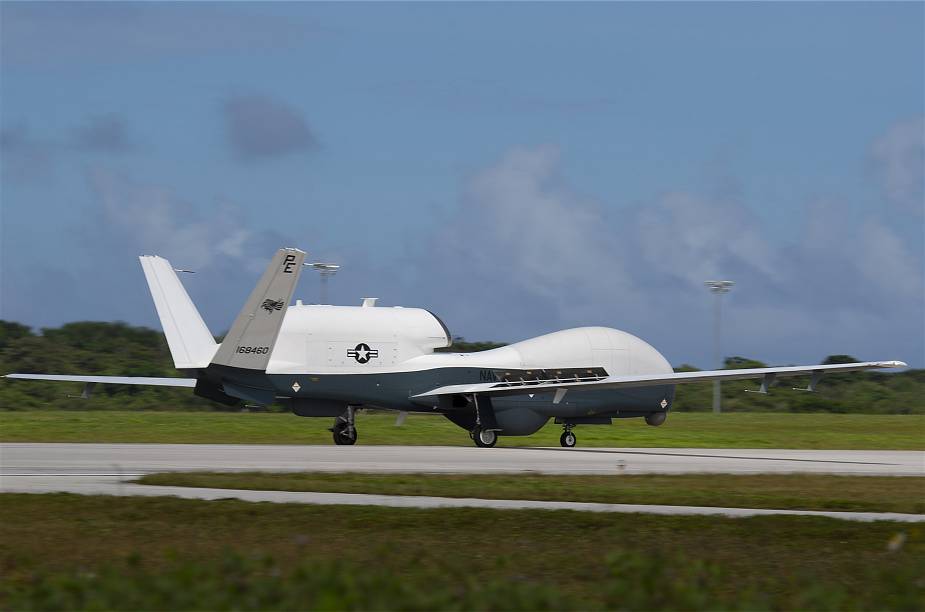Breaking news
Northrop Grumman contract for 3 low-rate initial production MQ-4C Triton unmanned aircraft for Australia.
According to a contract released by the U.S. DoD (Department of Defense) on June 25, 2020, Northrop Grumman Systems Corp., San Diego, California, is awarded a $333,401,760 modification (P00007) to previously-awarded fixed-price-incentive-firm-target contract N00019-19-C-0008. This modification exercises options for the production and delivery of three low-rate initial production MQ-4C Triton unmanned aircraft, two main operating bases and one forward operating base in an integrated functional capability-four and multiple-intelligence configuration, with associated export compliance support for the government of Australia.
Follow Navy Recognition on Google News at this link
 An MQ-4C Triton unmanned aircraft system (UAS) taxis after landing at Andersen Air Force Base for a deployment as part of an early operational capability (EOC) test to further develop the concept of operations and fleet learning associated with operating a high-altitude, long-endurance system in the maritime domain. (Picture source U.S Air Force)
An MQ-4C Triton unmanned aircraft system (UAS) taxis after landing at Andersen Air Force Base for a deployment as part of an early operational capability (EOC) test to further develop the concept of operations and fleet learning associated with operating a high-altitude, long-endurance system in the maritime domain. (Picture source U.S Air Force)
On June 19, 2020, Northrop Grumman Corporation (NYSE: NOC) has announced the Australian government’s decision to provide funding for an additional three of their planned six MQ-4C Tritons and associated ground mission control stations.
The MQ-4C Triton Unmanned Aircraft System (UAS) is a high altitude long endurance (HALE) aircraft that will be used for maritime patrol and other surveillance roles. Supporting missions for up to 24 hours, the Triton is equipped with a sensor suite that provides a 360-degree view of its surroundings for over 2000 nautical miles.
Seven Tritons will be based at Royal Australian Air Force (RAAF) Base Edinburgh and will operate alongside the P-8A Poseidon to replace the AP-3C Orions. The endurance of the Triton means that it can stay airborne for longer than a traditional aircraft where the pilot is inside.
The Triton will be flown by qualified Air Force pilots from a ground station, supported by a co-pilot. Information gathered by the Triton will be analyzed and communicated by operational staff such as aircrew, intelligence, operations and administration officers, engineers, and logisticians (depending on the training or mission requirements).
Based on the proven Global Hawk UAS, Triton's autonomous operations are supported by land-based command and control mission planners and sensor operators. Triton will be equipped with a unique and robust mission sensor suite that provides 360-degree coverage on all sensors, providing unprecedented maritime domain awareness for the U.S. Navy.
Triton also incorporates a reinforced airframe, for increased internal payload, and wing for hail, bird strike, and gust load protection, along with de-icing and lightning protection systems. These features allow the aircraft to descend and ascend through harsh maritime weather environments to gain a closer view of ships and other targets at sea when needed.
Built for the U.S. Navy, Triton will support a wide range of missions including maritime ISR patrol, signals intelligence, search and rescue and communications relay. The aircraft can fly over 24 hours at a time, at altitudes higher than 10 miles, with an operational range of 8,200 nautical miles.





























